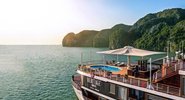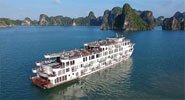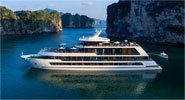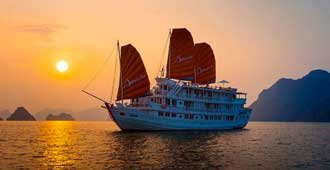Lan Ha Bay: A Guide The Less Touristic Alternative For Halong Bay
Lan Ha Bay is made up of around 300 karst islands and limestone sea rocks and can be found southeast of Cat Ba Island. As a geological extension of Halong Bay, Lan Ha Bay is equally as beautiful although it is less visited, less inhabited and therefore has the extra appeal of being a more peaceful place.
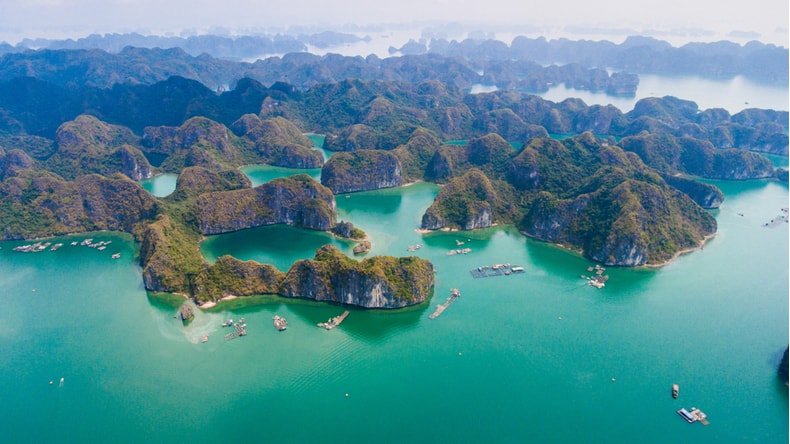
- Lan Ha Bay is located in the Gulf of Tonkin, near the city of Haiphong, in the northeastern part of Vietnam.
- Lan Ha Bay is over 400 square kilometers in size, making it smaller than its more famous neighbor, Halong Bay.
- Lan Ha Bay is known for its stunning natural beauty, with its towering cliffs, pristine beaches, and crystal-clear waters.
- Lan Ha Bay is home to a unique ecosystem, including hundreds of species of flora and fauna, and several species of endangered marine life.
- Compared to Halong Bay, Lan Ha Bay is less crowded, making it a great option for those seeking a more peaceful and serene experience.
- Lan Ha Bay is a great destination for kayaking and biking, with several scenic routes and trails to explore.
- There are many eco-friendly accommodations available in Lan Ha Bay, including floating hotels and eco-resorts, which help to preserve the natural environment of the bay.
What does Lan Ha Bay have to offer?
This secluded paradise is an exceptional beach destination, featuring hundreds of pristine white sand beaches. Although the beaches are relatively small, they are bordered by majestic limestone karsts that offer visitors ample privacy. While relaxing on these intimate shores, guests may observe a variety of butterflies and birds amid the abundant flora surrounding the sandy edges. Lan Ha Bay is also an excellent location for engaging in numerous water-based activities such as snorkeling, kayaking, and scuba diving!
An unexpected but thrilling activity available in Lan Ha Bay is rock climbing! Various cruise operators now provide opportunities to scale the ancient limestone karsts throughout the bay, offering visitors a unique perspective of Lan Ha Bay. While it can be a physically demanding experience, the sense of accomplishment upon reaching the summit is incredibly rewarding.
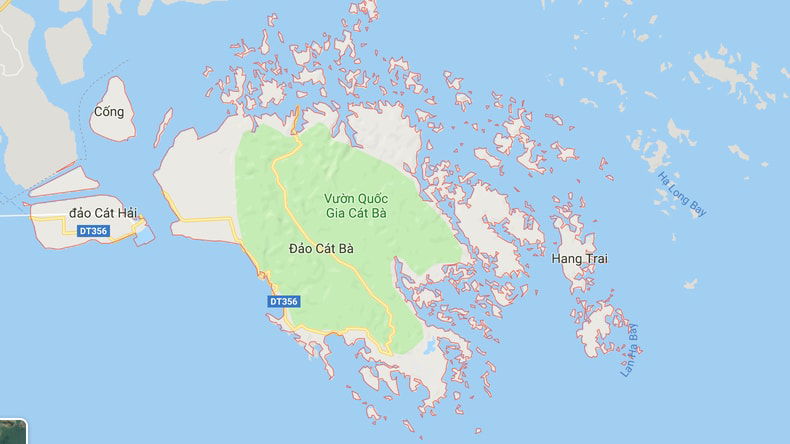
Many travelers use Lan Ha Bay as a stepping stone to explore the nearby fishing and floating villages that are integral to Halong culture. One of the must-see attractions in Lan Ha Bay is the Viet Hai Fishing Village, where locals invite tourists to experience their traditional ways of life. Visitors might be surprised to find that residents of the floating villages often have guard dogs, restaurants, and even a Town Hall.
Check out our guide: The best Lan Ha Bay cruises for every type of traveler
Some fortunate travelers may have the chance to witness bioluminescent plankton, visible in the waters of Lan Ha Bay during dark nights. These plankton create the enchanting illusion of stars shimmering in the ocean.
Places of interest

- Cat Ba Island - The largest island in the Cat Ba Archipelago, Cat Ba Island remains a central attraction of Lan Ha Bay. As a popular destination, it serves as a base for travelers exploring the Halong Bay area, especially for those opting not to take cruises. Visitors can delve into Cat Ba’s lush jungle, explore its numerous caves, and bask in stunning sunsets over the bay.

Cat Ba National Park - Photo: @bstravelshots / Instagram - Monkey Island - Known locally as Cat Dua Island, Monkey Island attracts visitors for its playful primates and breathtaking views of the bay. Frequently included in cruise itineraries, it can also be visited through day tours from Cat Ba Island. A short hike from the beach leads to the island's peak, offering some of the finest panoramas of Lan Ha Bay.

Photo: @dthanh.thanh / Instagram - Cannon Fort - Standing tall over Lan Ha Bay, Cannon Fort provides visitors with breathtaking panoramic views. The fort is perched on a hilltop that rises 177 meters above sea level and operates from 8 a.m. to 6 p.m. daily. The entrance fee for adults is approximately $2.50 USD, a small price for such spectacular scenery.

Cannon Fort - Cat Ba - Photo: @sunpinkkk / Instagram - Luon Cave - A highlight of Lan Ha Bay, Luon Cave is located on Bo Hon Island and is renowned for its enchanting natural beauty. Exploring the cave can be undertaken via kayak or local boat tours, providing an intimate experience with the serene environment. Inside, the air is refreshing, the water tranquil, and it’s common to spot monkeys frolicking among the rocks.

Bamboo boat through Luon Cave - Photo: @pikarounna_journeys / Instagram
Lan Ha Bay is also home to various enchanting islets and caves, including Guoc Islet, Doi Islet, Ca Cave, Dragon Jaw Cave, and Do Cung Cave!
How to get there
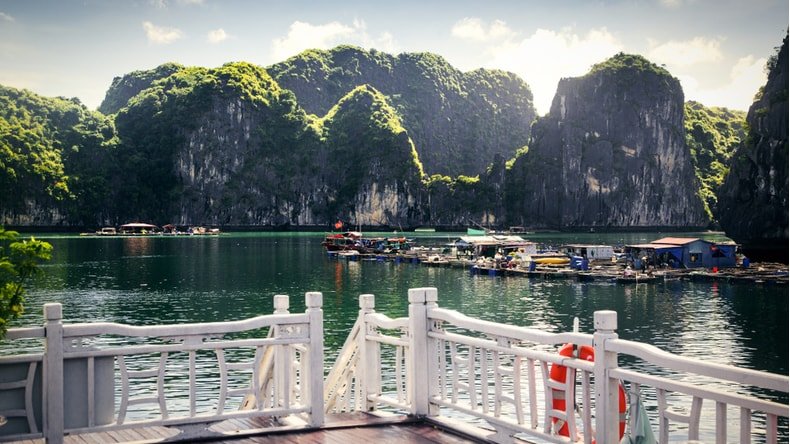
To reach Lan Ha Bay, there are several convenient options available. Many visitors opt to book a cruise with a Hanoi-based cruise company. These packages typically include round-trip transfers to and from Hanoi, along with full-board accommodation on a traditional junk ship.
A few popular cruises visiting Lan Ha Bay include:
| Cruise | Departure Port | Route |
|---|---|---|
| Orchid Cruises | Tuan Chau Pier, Halong Bay (approximately 170 km from Hanoi) | Tuan Chau Pier - Da Chong Islet - Con Vit Islet - Trung Trang - Tra Bau (Lan Ha Bay) |
| Peony Cruises | Tuan Chau Pier | Tuan Chau Pier - Cat Ba Island - Lan Ha Bay |
| Mon Cheri Cruises | Tuan Chau Pier | Hanoi - Hai Phong - Halong Bay - Lan Ha Bay - Cat Ba Island |
If you prefer to visit Lan Ha Bay independently, a good option would be to travel first to Cat Ba Island and then book a boat tour from there.
For those based in Hanoi, you can reach Cat Ba Island by taking a direct bus or taxi to Cat Hai Island, followed by a brief 10-minute speedboat journey to Cat Ba. The overall travel time from Hanoi to Cat Ba is about 3 hours, and the cost is approximately 350,000 VND.
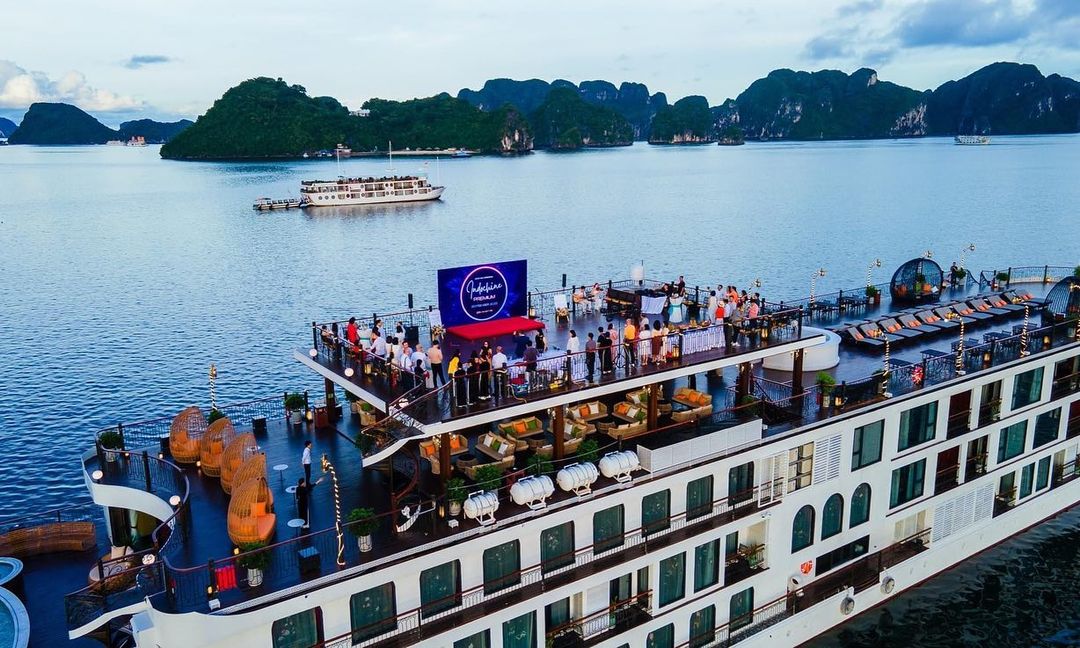
If you are traveling directly from Hai Phong, booking a speedboat or ferry from Binh Port to Cat Ba Island is very easy. Speedboats typically cost around 190,000 VND and take about 1 hour, while ferries cost about 120,000 VND and take around 2 hours. Tickets for both ferry and speedboat options can be purchased online or at Binh Port.
Weather & climate
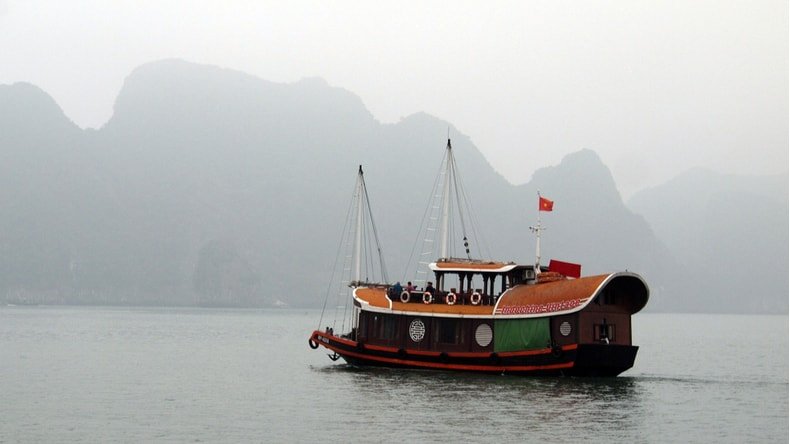
Visiting Lan Ha Bay is a rewarding experience at any time of year; however, the ideal periods to explore this beautiful destination are from March to June and from October to November.
Between March and June, the weather is mainly sunny, characterized by mild temperatures and relatively low rainfall compared to the summer months. This pleasant climate creates favorable conditions for various outdoor activities. However, it is important to note that this period coincides with peak domestic tourism, so you may encounter larger crowds. After June, the weather patterns start to change, and the likelihood of typhoons or tropical storms increases.
Lan Ha Bay Weather Averages:
| Months | High / Low (°C) | Rain | Rainfalls |
|---|---|---|---|
| January | 20° / 14° | 4 days | 39mm |
| February | 21° / 15° | 4 days | 21mm |
| March | 23° / 17° | 6 days | 52mm |
| April | 26° / 20° | 7 days | 65mm |
| May | 32° / 24° | 9 days | 170mm |
| June | 33° / 25° | 8 days | 188mm |
| July | 31° / 25° | 10 days | 250mm |
| August | 31° / 25° | 12 days | 320mm |
| September | 30° / 24° | 11 days | 240mm |
| October | 28° / 22° | 5 days | 70mm |
| November | 25° / 18° | 4 days | 50mm |
| December | 23° / 16° | 3 days | 30mm |
Weather Graph:

Summary: The months from October to November offer gentler sunshine and a refreshing breeze. An added advantage is that Lan Ha Bay is generally less crowded during this time than in the summer. The temperate climate and quieter surroundings make autumn a fantastic period for visiting Lan Ha Bay.


